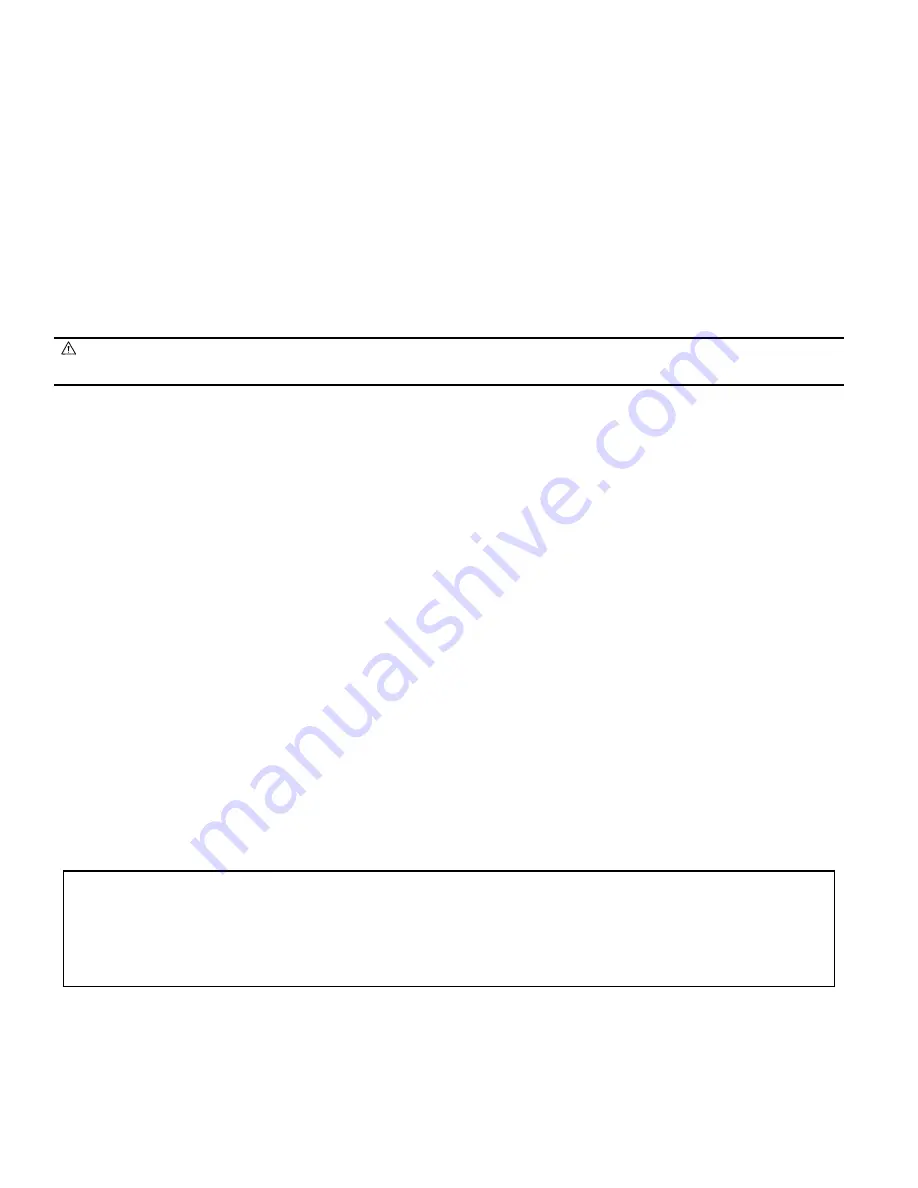
10. Turn furnace gas valve control knob or electric switch to OFF position.
11. Turn gas supply manual shutoff valve to OFF position.
12. Turn off furnace power supply.
13. Remove manometer and reinstall gas valve inlet pressure tap plug. (See Fig. 4.)
NOTE:
Use propane-gas-resistant pipe dope to prevent gas leaks. DO NOT use Teflon tape.
PROCEDURE 4—CHECK FURNACE OPERATION AND MAKE NECESSARY ADJUSTMENTS
1. Be sure main gas and electrical supplies to furnace are off.
2. Remove 1/8-in. pipe plug from manifold pressure tap on downstream side of gas valve. (See Fig. 4.)
3. Attach manometer to manifold pressure tap on gas valve.
4. Turn gas supply manual shutoff valve to ON position.
5. Turn furnace gas valve control knob or electric switch to ON position.
6. Check all threaded pipe connections for gas leaks.
WARNING: NEVER use a match or other open flame to check for leaks. Use a soap-and-water solution. Failure to
follow this warning could result in personal injury or death.
7. Turn furnace power supply on.
8. Jumper R and W/W1 thermostat connections to call for heat.
9. Check manifold orifices for gas leaks when main burners ignite.
PROCEDURE 5—SET GAS INPUT RATE
Furnace gas input rate on rating plate is for installations at altitudes up to 2000 ft. (See Fig. 3.)
In the U.S.A., the input rating for altitudes above 2000 ft must be reduced by 4 percent for each 1000 ft above sea level.
In Canada, the input rating must be derated by 10 percent for altitudes of 2000 ft to 4500 ft above sea level.
Furnace input rate must be within
±
2 percent of input on furnace rating plate.
The gas input rate must be set for both high- and low-heat stage. Each adjustment is made independently at the gas control regulators.
1. Determine natural gas orifice size and manifold pressure for correct input using Table 2 for models 58TUA, UHV, UXT, UXV/330AAV,
JAV, 333BAV, JAV (upflow and upflow horizontal) or Table 3 for models 58DXT, TMA/331JAV, AAV (downflow and
downflow/horizontal).
a. Obtain yearly heat value average (at installed altitude) from local gas supplier.
b. Obtain yearly specific gravity average from local gas supplier.
c. Verify furnace model and select appropriate table. Table 2 can only be used for upflow and upflow/horizontal, 2-speed and
variable-speed, hot surface ignition, non-condensing furnaces. Table 3 can only be used for downflow and downflow/horizontal, 2-speed,
hot surface ignition, non-condensing furnaces.
d. Find installation altitude in Table 2 (for upflow and upflow/horizontal furnaces) or Table 3 (for downflow and downflow/horizontal
furnaces).
NOTE:
For Canada altitudes of 2000 to 4500 ft, use U.S.A. altitudes of 2001 to 3000 ft in Table 2 or 3.
e. Find closest natural gas heat value and specific gravity in Table 2 (for upflow and upflow/horizontal furnaces) or 3 (for downflow and
downflow/horizontal furnaces).
f. Follow heat value and specific gravity lines to point of intersection to find orifice size and low- and high-heat stage manifold pressure
settings for proper operation.
EXAMPLE: (Using Table 2 for upflow or upflow/horizontal furnace at 0—2000 ft altitude)
Heating value = 1050 Btu/cu ft
Specific gravity = 0.62
Therefore: Orifice No. 45
Manifold pressure: 3.6-in. wc for high-heat stage
1.5-in. wc for low-heat stage
g. Check and verify burner orifice size in furnace. NEVER ASSUME ORIFICE SIZE. ALWAYS CHECK AND VERIFY.
2. Adjust manifold pressure to obtain input rate.
a. Turn SW-2 (on control board) to the ON position. (See Fig. 6 and 7.)
b. Jumper R to W/W1 and R to W2 thermostat connections to call for high-heat stage.
c. Remove caps that conceal adjustment screws for high- and low-heat stage gas valve regulators. (See Fig. 4.)
d. Turn high-heat stage adjusting screw (5/64-in. hex allen wrench) counterclockwise (out) to decrease input rate or clockwise (in) to
increase rate.
—12—
→
→



























